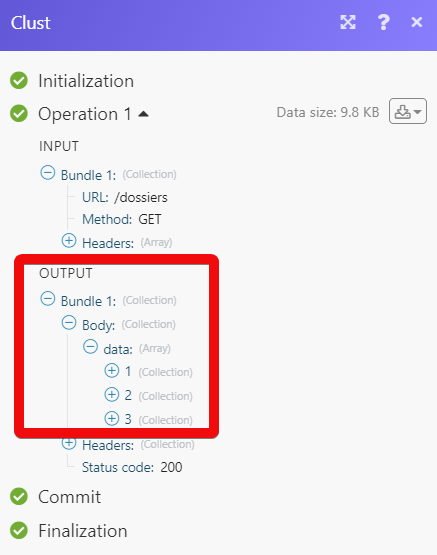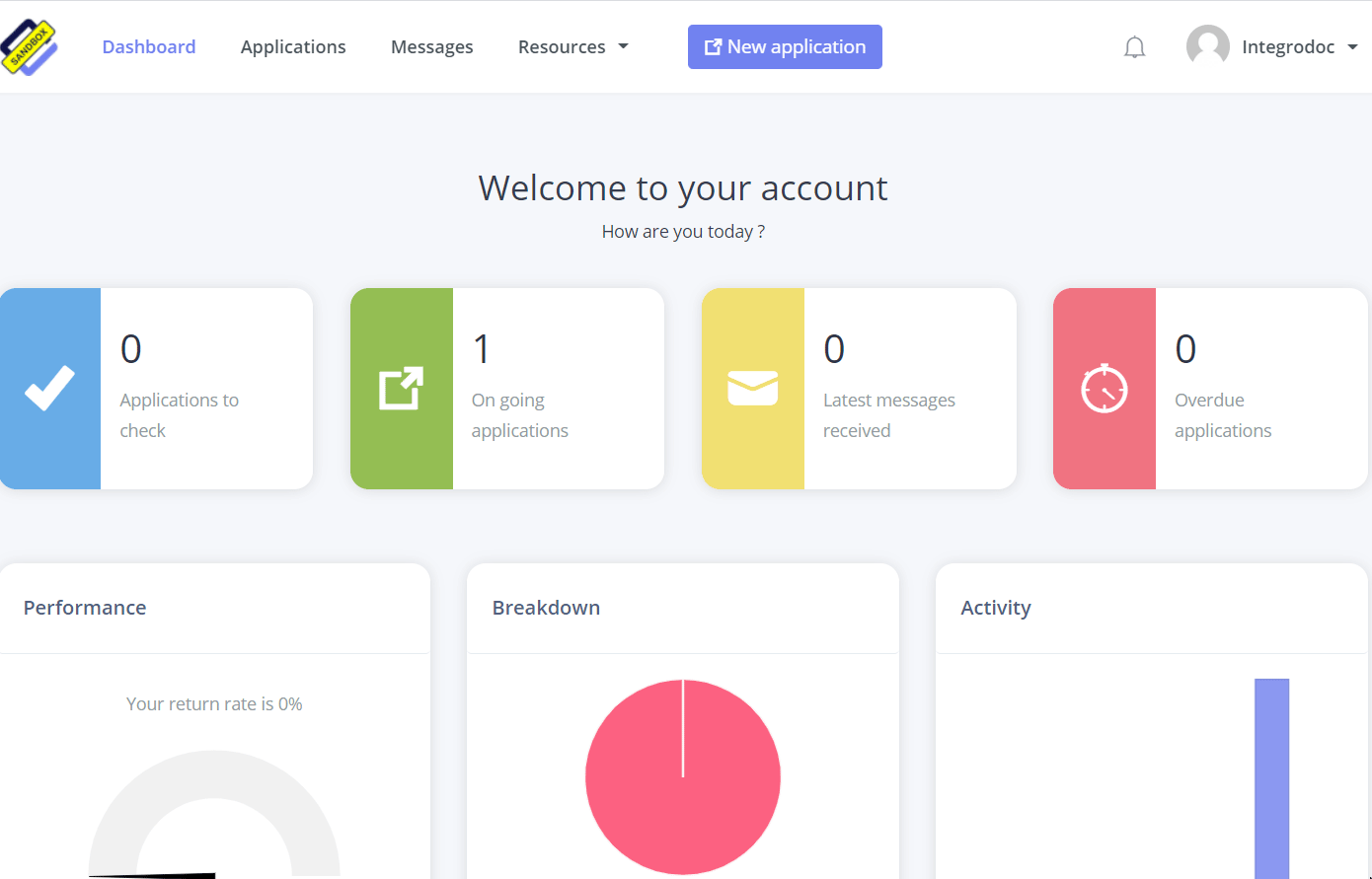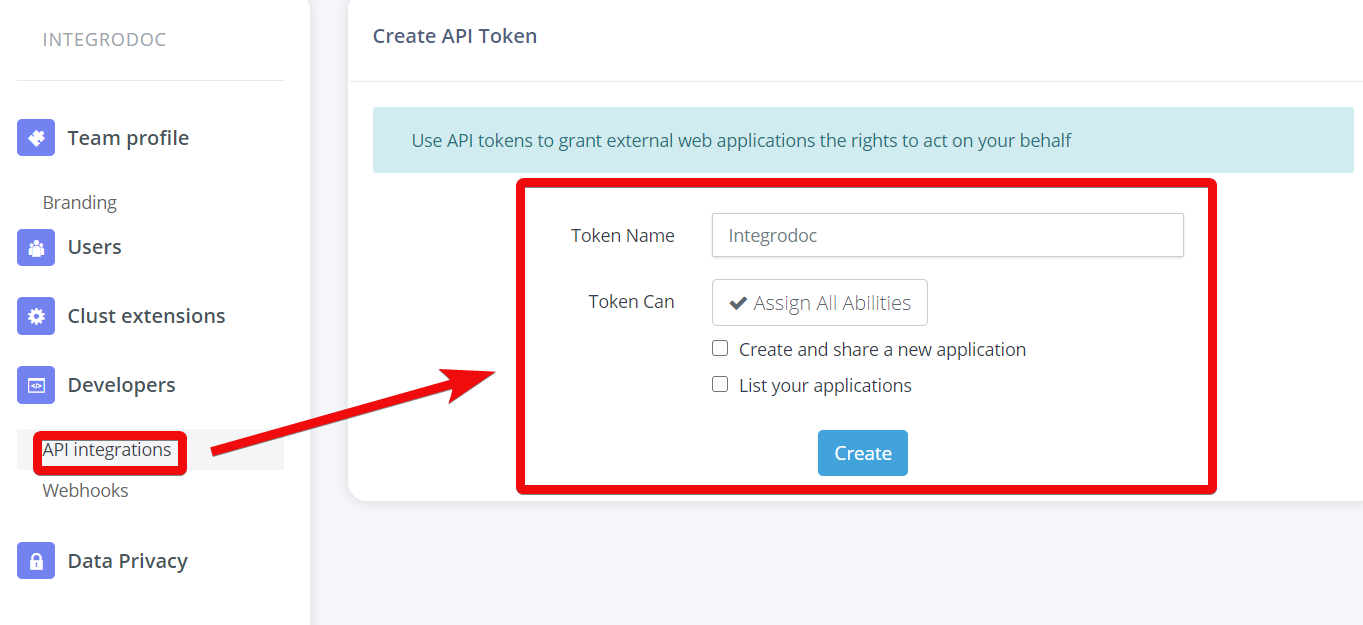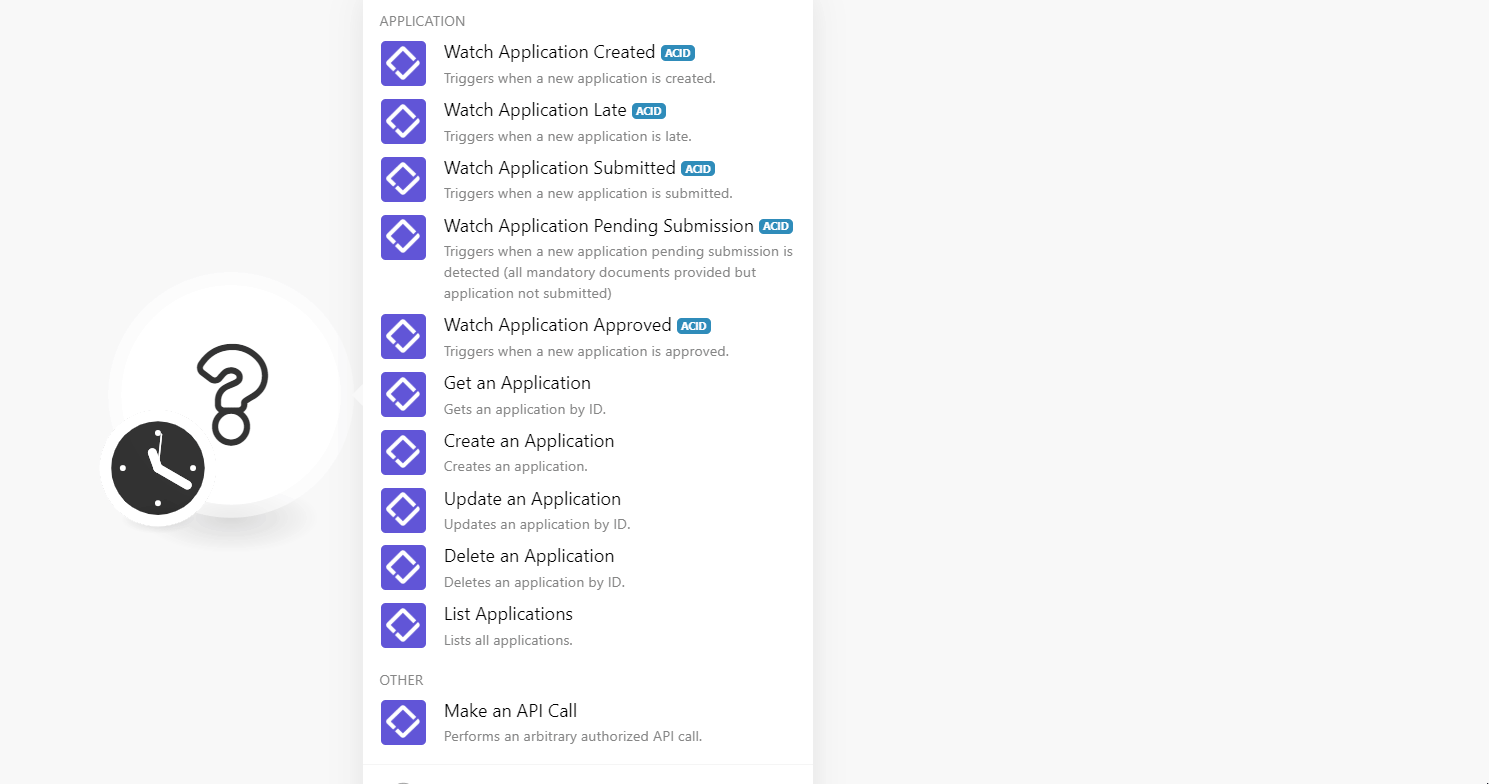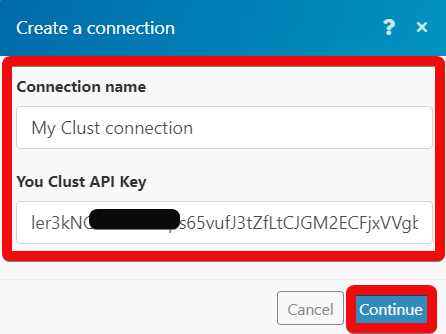| Active with remarks |
|---|
| This application needs additional settings. Please follow the documentation below to create your own connectionUnique, active service acces point to a network. There are different types of connections (API key, Oauth…). More. |
The Clust modulesThe module is an application or tool within the Boost.space system. The entire system is built on this concept of modularity. (module - Contacts) More allow you to create, watch, update, and delete application in your Clust account.
Prerequisites
-
A Clust account
In order to use Clust with Boost.spaceCentralization and synchronization platform, where you can organize and manage your data. More IntegratorPart of the Boost.space system, where you can create your connections and automate your processes. More, it is necessary to have a Clust account. If you do not have one, you can create a Clust account at clustdoc.com/register.
![[Note]](https://docs.boost.space/wp-content/themes/bsdocs/docs-parser/HTML/css/image/note.png) |
Note |
|---|---|
|
The moduleThe module is an application or tool within the Boost.space system. The entire system is built on this concept of modularity. (module - Contacts) More dialog fields that are displayed in bold (in the Boost.space Integrator scenarioA specific connection between applications in which data can be transferred. Two types of scenarios: active/inactive. More, not in this documentation article) are mandatory! |
To connect your Clust account to Boost.space Integrator you need to obtain the API Key from your Clust account and insert it in the Create a connection dialog in the Boost.space Integrator module.
-
Log in to your Clust account.
-
Click Profile Icon > Set up Team > Developers > API Integrations section.
-
In the TokenThe API token is a multi-digit code that allows a user to authenticate with cloud applications. More Name field, enter a name for the token and select the permissions for the token. Click Create.
-
Copy the API tokenThe API token is a multi-digit code that allows a user to authenticate with cloud applications. More to your clipboard.
-
Go to Boost.space Integrator and open the Clust module’s Create a connection dialog.
-
In the Connection name field, enter a name for the connection.
-
In Your Clust API Key field, enter the API key copied in step 4 and click Continue.
The connection has been established.
TriggersEvery scenario has a trigger, an event that starts your scenario. A scenario must have a trigger. There can only be one trigger for each scenario. When you create a new scenario, the first module you choose is your trigger for that scenario. Create a trigger by clicking on the empty module of a newly created scenario or moving the... when a new application is created.
|
Connection |
|
|
Limit |
Enter the maximum number of applications Boost.space Integrator should return during one scenario execution cycleA cycle is the operation and commit/rollback phases of scenario execution. A scenario may have one or more cycles (one is the default).. |
Triggers when a new application is late.
|
Connection |
|
|
Limit |
Enter the maximum number of applications Boost.space Integrator should return during one scenario execution cycle. |
Triggers when a new application is submitted.
|
Connection |
|
|
Limit |
Enter the maximum number of applications Boost.space Integrator should return during one scenario execution cycle. |
Triggers when a new application pending submission is detected (all mandatory documents provided but the application not submitted).
|
Connection |
|
|
Limit |
Enter the maximum number of applications Boost.space Integrator should return during one scenario execution cycle. |
Triggers when a new application is approved.
|
Connection |
|
|
Limit |
Enter the maximum number of applications Boost.space Integrator should return during one scenario execution cycle. |
Gets an application by ID.
|
Connection |
|
|
Application ID |
Select the Application ID whose details you want to retrieve. |
Creates an application by ID.
|
Connection |
|
|
TemplateTemplates are predefined scenarios that you can expand and customize to create new scenarios. You can then share these with friends and colleagues. More ID |
Select the Template ID appropriate for the application you want to create or select Create a new template to create a new template for the application. |
|
First Name |
Enter the recipient’s first name. |
|
Last Name |
Enter the recipient’s last name. |
|
|
Enter the recipient’s email address. |
|
Phone |
Enter the recipient’s phone number. |
|
Title |
Enter the name of the application. |
|
External ID |
Any internal reference to the application. |
|
Auto Emails |
Select 1 to send auto emails to the recipient for any updates or changes to the application. Select 0 to send email to the recipient manually. |
|
Folder ID |
Enter the Folder ID where the application is saved. |
|
Custom |
Add any additional information about the recipient. This information is not visible to the recipient. |
|
URL |
Enter the webhookA webhook is a way for an app to send real-time information to a specific URL in response to certain events or triggers. URL to integrate. |
|
Events |
Select the events for the application:
|
Updates an application by ID.
|
Connection |
|
|
Application ID |
Select the Application ID you want to update. |
|
Template ID |
Select the Template ID appropriate for the application you want to create or select Create a new template to create a new template for the application. |
|
First Name |
Enter the recipient’s first name. |
|
Last Name |
Enter the recipient’s last name. |
|
|
Enter the recipient’s email address. |
|
Phone |
Enter the recipient’s phone number. |
|
Title |
Enter the name of the application. |
|
External ID |
Any internal reference to the application. |
|
Auto Emails |
Select 1 to send auto emails to the recipient for any updates or changes to the application. Select 0 to send email to the recipient manually. |
|
Folder ID |
Enter the Folder ID where the application is saved. |
|
Custom |
Add any additional information about the recipient. This information is not visible to the recipient. |
|
URL |
Enter the webhook URL to integrate. |
|
Events |
Select the events for the application:
|
Deletes an application by ID.
|
Connection |
|
|
Application ID |
Select the Application ID you want to delete. |
Lists all applications.
|
Connection |
|
|
Limit |
Enter the maximum number of applications Boost.space Integrator should return during one scenario execution cycle. |
Performs an arbitrary authorized API call.
|
Connection |
||||
|
URL |
Enter a path relative to
|
|||
|
Method |
Select the HTTP method you want to use: GET to retrieve information for an entry. POST to create a new entry. PUT to update/replace an existing entry. PATCH to make a partial entry update. DELETE to delete an entry. |
|||
|
Headers |
Enter the desired request headers. You don’t have to add authorization headers; we already did that for you. |
|||
|
Query String |
Enter the request query string. |
|||
|
Body |
Enter the body content for your API call. |
The following API call returns all tasks from your Clust account:
URL:
/dossiers
Method:
GET
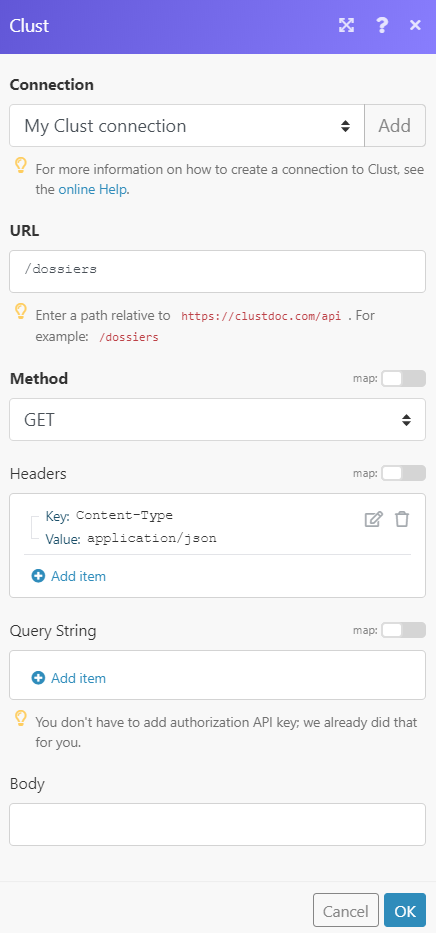
Matches of the search can be found in the module’s Output under BundleA bundle is a chunk of data and the basic unit for use with modules. A bundle consists of items, similar to how a bag may contain separate, individual items. More > Body > data.
In our example, 3 applications were returned:
